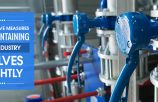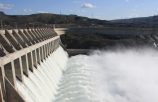3 Most Common Valve Problems You Can Face In Your Industry Pipelines
 secureluokai
secureluokai
 May 11, 2017
May 11, 2017

A valve finds invincible usage in industrial applications where it is widely used to start, halt or throttle the flow to allow the safe operation of the pipeline system. However, like everything else, a valve can get damaged and might be prone to wear and tear. This is the reason perhaps why they need to be examined regularly to avoid any associated risks.
Let’s have a quick look on a few common valve problems that might confront your pipelines and the preventive steps that should be taken.
1) Water hammer
A water hammer is generally a result of the sudden closure of a valve at the end of a pipe system that causes a pressure wave to spread in the pipe. It is also referred to as hydraulic shock. Such pressure wave might lead to major trouble, from banging noise to vibration and can even lead to the pipe collapse.
The rapid shutting or opening of a valve results in pressure transients within pipelines. If the loud noise occurs with the closing of a valve or the changing of cycles by the washer, it might be water hammer.
The length of the pipe is an essential factor which might be the major cause behind water hammer. It is thus highly recommended to examine the pipe size in order to find out the cause of water hammer. However, a small pipe is not the cause if it is of extremely short length.
Hammer is also influenced by water velocity, as the quicker the water moves inside the pipe, the greater is the water hammer. Hence, most of the recommended solutions regarding water hammer are directed at lowering the water velocity.
Remedy
Water hammer is generally caused due to rise in pressure and shock waves because of the change in the direction and rate of flow of the liquid moving through the water system. Partially shutting the current valves of the system lowers the speed and pressure of the liquid.
Moreover, water hammer can also be controlled by installing a faster-closing valve that is devised to close at a quick speed to stop the pressure rise and shock waves. Further, using little-oversized valves are also effective in minimizing the pressure.
Using a well-calibrated and compressible air cushion is another effective method by which water hammer can be checked. Water hammer arresters use a pressurized air cushion and a two O-ring piston. As the valve shuts down with the sudden stoppage of water flow, the piston is pushed upwards the arrester chamber by the pressure spike to counter the pressurized air cushion. This causes the air cushion inside the arrester to quickly react and absorb the pressure spike that triggers the water hammer.
2) Reverse flow
Reverse flow is another major issue that might cause extensive damage to the pipeline. It is caused due to the sudden change of direction of the flowing liquid. When the water flow in a pipe is in reverse direction than what was devised by the system designer, it is called a backflow.
In technical terms, such flow reversal is mainly caused due to an adverse pressure gradient forced upon the boundary layer by the external potential flow. Reverse flow can cause backflow in a clean water system by siphoning.
Remedy
Using silent check valves in place of conventional check valves or a spring based in-line valve and other varieties of faster-closing valves can check reverse flow. Such valves shut off quickly when the forward velocity flow of the liquid touches zero to restrict reverse flow.
The non-return valve or check valve is an option here for stopping reverse flow in pipelines but is not a recognized device for backflow prevention. The swing valve is the simplest design for a non-return valve and has a weighted flap which is kept open by the flowing water upstream. If there is a reverse flow, it shuts down under its load and is kept closed by the back pressure working on the closed flap.
Reverse flow can be expensive if it takes place at the pump discharge and the pump actually spins backward. The cost for pump repairing or replacement is greater than the installation cost of the proper check valve. A check valve permits flow in a single direction and automatically stops the reverse flow when the fluid in the pipeline reverses direction. They are amongst self-automated valves that need no assistance for opening or for closing.
3) Valve leakage
A greater proportion of fugitive emissions is due to valve leakage and these leakages stay in the pipelines and cause safety risks to the system. Valves can leak if they are completely clogged with debris and dirt. Leakage might also be caused due to damaged seat or seal of the valve.
Remedy
It is highly recommended to select the exact valve size to reduce valve leakage. Performing constant inspection plus testing also guarantees that the valve leakage does not harm a system or the environment.
The best option to avoid valve leakage is to opt for specialized valves such as bellow sealed globe valves The key part of bellow sealed globe valves is the mental bellow which connects the cover and stem of the valve with automatic roll welding. This particular portion of the valve keeps the stem part from facing any leakage problem.
The material used in such specialized valves also helps to stop leaks for systems that use a particular type of liquid.
Above all, it is highly recommended to select a piggable valve which is designed in such a way that it can be inspected as well as cleaned. Besides, the media or the material that pass through a pipeline system is also an important consideration while choosing a valve. Media has a deciding role to play when choosing the valve body and disc structure and also the speed and kind of the actuator.
Wrapping Up
Proper up-keeping and the maintenance of the valve can boost your system’s life and durability. Follow the above-mentioned tips to improve valve-life so as to give your plant system the optimum performance.
What are your views on this? How do you ensure that your valves are functioning properly? For more information about various valves specifically required for your industrial plants / business, Contact Flowspec and we will be happy to answer your questions and give you all the details you need.




